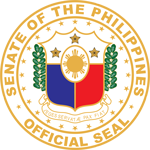
Valenzuela City Congressman Win Gatchalian thinks the Department of Education (DepED) has been effective in implementing the K to 12 Program, which will add two years in the basic education curriculum cycle in the Philippines.
In their 2015 mid-term Congress report on K to 12 Program, DepEd expressed evidently their capability to address the classrooms and teachers needed for the senior high school (SHS) curriculum.
However, the strong public clamor to stop the implementation of K to 12 Program has been very much alive.
Related News: Why do we need a quarterly progress report on K to 12 Program?
For his part, Gatchalian, a member of House Committee on Basic Education and Culture, has named three main reasons why Filipinos should support the reform on basic education curriculum in the country.
The lawmaker said the positive effects of these three reasons outweigh the challenges faced by the government and temporary setback for the public in implementing the K to 12 Program.
The three main reasons are:
- Filipinos will be globally competitive.
With the onset of globalization, Gatchalian is confident that K to 12 Program will make the next generation of Filipino graduates fit to compete with graduates from other nations.
The lawmaker said such competency will also make life easier for Filipinos in case they want to pursue their studies or career overseas.
“K to 12 will make us globally competitive. Kahit itapat mo sa ibang lahi, kayang makipagsabayan ng Pinoy,” Gatchalian said.
“Sa ngayon, tatlong bansa na lang sa buong mundo ang may 10-year basic education: Pilipinas, Angola at Djibouti,” he added.
Currently, the 12-year basic education program is deemed to be the adequate period for learning under basic education.
It is also a standard for recognition of students and/or professionals abroad, namely the Bologna Process for the European Union and the Washington Accord for the United States.
Related News: ‘K to 12 Program’ will improve employability of high school graduates
- Tech-voc in basic education will boost employability.
Under the K to 12 Program, a student will obtain Certificates of Competency (COC) or a National Certificate Level I (NC I) after finishing Grade 10.
Furthermore, a student may also get a National Certificate Level II (NC II) if he chose to enter the Technical-Vocational-Livelihood track in the SHS curriculum.
Gatchalian said these skills certificates will drastically improve the employability of high school graduates, particularly in the field of Agriculture, Electronics, and Trade.
“Sinasabi nila may TESDA naman pero kasi yung TESDA, as I see it, is more of an alternative course for OSYs and those who want skill updates,” Gatchalian shared.
“Maganda pa rin na may tech-voc curriculum na talaga sa ating basic education curriculum. Para kumpleto na agad pag-graduate nila ng high school,” he said.
Related News: Bill imposing a 2-year moratorium on tuition hike filed
- Students will be given more time to master lessons.
In adding two years in basic education, K to 12 Program will decongest the current cramped curriculum and give time for students to learn their lessons.
“If we expand the number of years in basic education, students will have more time to master the skills and competencies being taught to them,” Gatchalian said.
“They will also be more mature and organized by the time they finished high school at the age of 18,” he added.
Gatchalian added the K to 12 program will pave the way for a spiral curriculum, in which there will be an upward progression in learning.
Under the spiral curriculum, students will have a chance to revisit their lessons repeatedly, building upon them until the student has full understanding. (Tim Alcantara)


